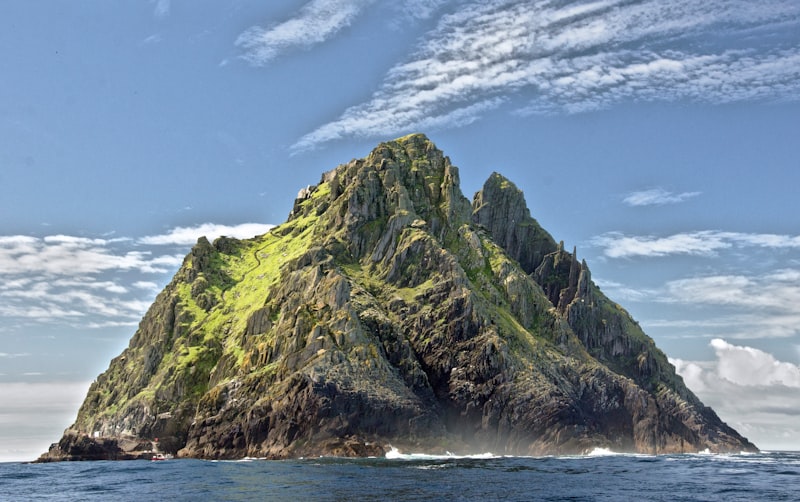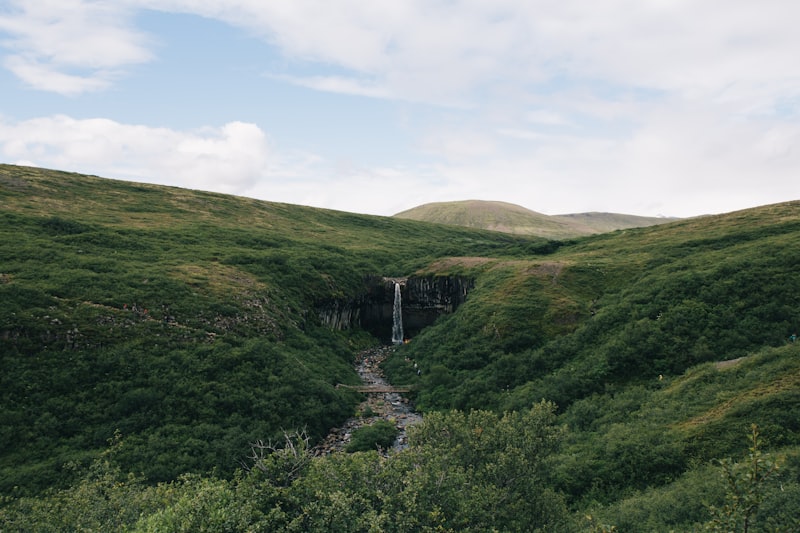Island species, like the iconic Galápagos finches studied by Darwin, exemplify adaptive radiation where a single ancestor diversifies into multiple species to exploit different ecological niches. This phenomenon results from genetic drift, natural selection, and founder effects. Small founding populations on islands experience genetic drift more profoundly due to their limited gene pool, leading to rapid evolution and speciation.
Inbreeding is another significant factor on islands. Limited mating choices can increase the frequency of recessive genetic disorders but also reinforce advantageous traits, such as resistance to local diseases or unique morphological adaptations like the dwarfism seen in island mammals.
Islands also provide natural laboratories for studying evolutionary forces like gene flow and genetic isolation. For instance, species on neighboring islands may share a common ancestor but diverge due to isolation barriers like water channels or different environmental conditions, leading to distinct genetic signatures.
The concept of adaptive evolution in island species is akin to a genetic treasure hunt, where researchers uncover how organisms respond to unique selection pressures. This exploration not only deepens our understanding of evolution but also informs conservation strategies, highlighting the importance of preserving island biodiversity as a reservoir of unique genetic adaptations.

The study of population genetics in island species offers profound insights into evolutionary processes and the mechanisms driving biodiversity. By unlocking these genetic mysteries, scientists unravel the secrets of how life adapts and thrives in isolated ecosystems, shaping our broader understanding of life on Earth.
Island Evolution Unveiled: How Genetics Shape Species Diversity
Ever wondered why islands are often hotspots for unique species found nowhere else on Earth? The answer lies in the fascinating interplay between genetics and isolation. Islands, isolated from mainland influences, create a natural laboratory where evolution unfolds in remarkable ways.
One of the key factors driving this evolutionary marvel is genetic drift. On islands, small founder populations can lead to genetic changes over generations due to random sampling of genes. This process, amplified by isolation, can result in distinct genetic signatures among island species compared to their mainland relatives.
Another crucial mechanism is adaptive radiation, where a single ancestral species diversifies into a multitude of forms to exploit various ecological niches. This phenomenon is beautifully illustrated by the Darwin’s finches of the Galápagos Islands, each species uniquely adapted to different diets and habitats.
Islands also showcase the power of natural selection in driving species diversity. With limited resources and unique environmental conditions, organisms that possess advantageous traits have a higher chance of survival and reproduction. Over time, these adaptations accumulate, leading to the emergence of new species tailored to island life.
Moreover, islands provide a clear illustration of speciation—the process by which new species arise. Geographic isolation, coupled with genetic mutations and adaptations, can eventually lead to reproductive barriers between island and mainland populations, marking the birth of distinct species.
In essence, the study of island evolution not only sheds light on the origins of biodiversity but also underscores the delicate balance between genetic heritage and environmental influences. By unraveling the genetic underpinnings of species diversity on islands, scientists gain valuable insights into the broader mechanisms driving evolution across the planet.
Genetic Secrets of Island Adaptation: Insights into Species Survival
Here’s where genetics comes into play. Over generations, isolated island populations undergo genetic changes that equip them to thrive in their new environment. Traits that were once rare or even nonexistent in their mainland ancestors become commonplace. This phenomenon, known as genetic adaptation, is like nature’s own tailor, custom-fitting species to their island homes.
Take the classic example of Darwin’s finches in the Galápagos Islands. Each species of finch has developed a unique beak shape and size that perfectly suits its preferred food source, whether it’s probing for insects or cracking open seeds. These adaptations didn’t happen overnight; they evolved gradually through genetic mutations and natural selection over millennia.
But it’s not just birds. From giant tortoises to lizards and even plants, islands are full of examples where genetic tweaks have paved the way for survival. Some species grow larger or smaller than their mainland cousins, optimizing their size for island life. Others develop unique reproductive strategies to cope with limited mates or resources.
Understanding these genetic secrets isn’t just about satisfying scientific curiosity. It’s crucial for conservation efforts too. By studying how island species adapt to their environments, scientists can better predict how they might respond to future challenges like climate change or invasive species. It’s a race against time to unlock these secrets before they’re lost forever.
So, next time you marvel at the diversity of life on a remote island, remember that each species carries within it a genetic history shaped by its island home. It’s a testament to nature’s ingenuity and resilience, a story written in DNA that continues to unfold with each passing generation.
The Darwinian Playground: Genetics and Speciation on Islands
Genetics plays a pivotal role in this evolutionary theater. On islands, isolated populations face selective pressures distinct from those on the mainland. Over generations, genetic mutations occur randomly within these populations. Some mutations offer advantages, such as better camouflage or more efficient hunting techniques, enhancing survival chances. These advantageous traits can then spread through the population via natural selection, shaping the species’ adaptation to its island environment.
One compelling example is the Hawaiian honeycreepers, a diverse group of birds descended from a common ancestor. Over millennia, these birds have evolved into a dazzling array of forms, from the vibrant ‘I’iwi with its curved bill for feeding on nectar, to the robust ‘Apapane adapted for probing flowers, each species occupying a distinct ecological niche on different Hawaiian islands.
Islands also illustrate the power of geographic isolation in driving speciation. When a species becomes isolated on an island, its gene pool diverges from that of its mainland relatives. This divergence can lead to reproductive isolation over time, where genetic differences accumulate to the point where individuals from different populations can no longer interbreed successfully.

In essence, islands act as cradles for biodiversity, showcasing the intricate dance between genetics and environment in the theater of evolution. They provide a canvas where nature experiments with life’s endless possibilities, sculpting unique forms and functions that continue to fascinate scientists and nature enthusiasts alike. As we unravel more mysteries of the Darwinian playground, the story of islands and their evolutionary dramas continues to captivate, offering profound insights into the origins and diversity of life on Earth.
Island Isolation: Genetic Barriers That Define Species Boundaries
Ever wondered why certain animals or plants only exist on specific islands? The concept of island isolation and its impact on genetic diversity is a fascinating field of study. Islands, with their unique ecosystems and limited gene flow, often serve as natural laboratories where evolution takes intriguing turns.
Island isolation occurs when a species becomes separated from mainland populations, either through geological changes or migration patterns. Over time, these isolated populations may undergo genetic changes due to factors like genetic drift, natural selection, and mutation. This process can lead to the development of distinct traits and adaptations, ultimately defining new species boundaries.
Take the Galápagos Islands, for instance. These remote volcanic islands are renowned for their endemic species, such as the Galápagos giant tortoise and marine iguana. The isolation of these islands played a crucial role in shaping the unique genetic makeup of these species. With limited interaction with mainland populations, genetic mutations and adaptations accumulated over generations, resulting in species that are found nowhere else on Earth.
One of the key mechanisms driving speciation on islands is genetic drift. In small populations, genetic drift can have a significant impact, leading to the fixation of certain alleles and the loss of others purely by chance. This phenomenon is particularly pronounced on islands where population sizes are often small and fluctuate due to environmental factors.
Natural selection also plays a pivotal role in species differentiation on islands. The unique environmental conditions and ecological niches present on islands exert selective pressures that favor specific traits. Over time, individuals with advantageous traits are more likely to survive and reproduce, passing on their genetic material to subsequent generations. This process can lead to rapid adaptation and the emergence of distinct island-adapted species.
From Founder Effects to Genetic Drift: Island Species’ Evolutionary Pathways
Imagine a world where isolated islands become laboratories for evolutionary wonders. Island species, cut off from mainland influences, embark on unique journeys shaped by genetic drift and founder effects. These phenomena, fundamental in evolutionary biology, sculpt the destinies of creatures in extraordinary ways.
Founder effects kickstart this journey when a small group of individuals establishes a new population on an island. These pioneers bring with them a subset of the genetic diversity found in their parent population, setting the stage for genetic peculiarities to take root. Imagine them as pioneers in uncharted territory, their genetic makeup influencing the future generations of island inhabitants.
Genetic drift, acting as a silent sculptor, amplifies the impact of chance events on small populations. Picture a small island where random factors like natural disasters or disease outbreaks disproportionately shape the genetic composition of its inhabitants. Over time, these chance occurrences can lead to the fixation of certain traits or the loss of others, creating a genetic mosaic unique to that island.
Islands, with their limited space and resources, impose selective pressures that further refine evolutionary paths. Species may adapt to niche environments like lush forests or rocky shores, each adaptation a testament to the island’s selective pressures. It’s akin to a sculptor chiseling away at a block of marble, revealing intricate details shaped by the island’s environmental constraints.
In this microcosm of evolution, every species tells a story woven from the threads of genetic chance and environmental necessity. Island species, from the iconic Galapagos finches to the mysterious lemurs of Madagascar, showcase the power of isolation in driving evolutionary innovation. Their tales remind us that in the vast tapestry of life, even the smallest threads can weave the most astonishing patterns.
Adapt or Perish: How Island Species Harness Genetic Diversity
Imagine an isolated island as a crucible of evolution, where species must navigate a delicate balance between adaptation and extinction. The key lies in their genetic makeup — the blueprint that determines their ability to thrive in often harsh and ever-changing environments.
Genetic diversity, the variety of genetic information within a population, plays a pivotal role. It acts as nature’s insurance policy, ensuring that some individuals possess traits that can withstand unforeseen challenges such as climate shifts or invasive species. For instance, the Galápagos finches famously adapted their beak shapes to exploit different food sources, showcasing how genetic diversity fuels innovation in response to ecological pressures.
Moreover, island species often exhibit unique adaptations that are not found on the mainland. The flightless cormorants of the Galápagos, for instance, have evolved reduced wing sizes due to the absence of natural predators, focusing their energy on diving for fish instead. This specialization is a testament to the power of genetic diversity in shaping survival strategies in isolated habitats.
Yet, the story of island species is not without its challenges. Small population sizes, characteristic of many island inhabitants, can lead to genetic bottlenecks — a reduction in genetic diversity due to limited breeding options. This phenomenon increases the risk of inbreeding and decreases the resilience of populations to environmental changes.
Island species provide a fascinating glimpse into the interplay between genetics and adaptation. Their ability to harness genetic diversity enables them to thrive in some of the most isolated and challenging environments on Earth. By understanding how these organisms evolve, researchers gain insights into broader principles of ecology and conservation, highlighting the delicate balance between adaptability and survival in a rapidly changing world.
Genetic Resilience on Islands: Exploring the Role of Natural Selection
Ever wondered why some species thrive on isolated islands while others struggle to survive? The answer lies in the fascinating interplay of genetics and natural selection. Islands, with their unique ecological niches and limited resources, create a natural laboratory where evolution unfolds in remarkable ways.
One of the key players in this evolutionary drama is genetic resilience. Essentially, it’s the ability of a species to adapt and persist in the face of environmental challenges specific to an island. Imagine a species arriving on a remote island, cut off from mainland influences. It faces new predators, different climate patterns, and a whole new menu of food sources. Those individuals with genetic traits suited to these challenges—say, resistance to a new disease or the ability to digest a novel plant—have a better chance of survival.
Natural selection then acts as nature’s editor, favoring these advantageous genetic traits. Over generations, individuals carrying these traits become more prevalent within the population. This process not only shapes the physical characteristics of the species but also its genetic makeup. In essence, the island becomes a testing ground where only the genetically resilient survive and reproduce, passing on their adaptive traits to future generations.
Take the classic example of Darwin’s finches in the Galápagos Islands. Each island in the archipelago presented different food sources, from insects to seeds of various sizes. The finches with beak shapes best suited to the available food thrived, illustrating how genetic variation coupled with natural selection leads to rapid adaptation.
Interestingly, genetic resilience isn’t just about survival; it’s also about the long-term health of a population. By maintaining a diverse gene pool, species on islands can better withstand future challenges, such as climate change or invasive species introductions. This resilience is crucial for the survival of many island species facing human-induced environmental changes today.
Genetic resilience on islands is a testament to the power of natural selection in shaping biological diversity. It’s a dynamic process where genetic variation meets environmental pressures, leading to evolutionary outcomes that continually amaze scientists and enthusiasts alike. Islands, with their isolation and unique ecosystems, provide invaluable insights into how life adapts and thrives in the most unexpected of places.
Frequently Asked Questions
How do founder effects contribute to genetic variation in island species?
Founder effects contribute to genetic variation in island species by reducing the initial gene pool from the mainland population. This genetic bottleneck leads to increased genetic drift and fixation of certain alleles, resulting in unique genetic signatures in island populations.
How does isolation affect genetic diversity in island species?
Isolation can significantly impact genetic diversity in island species by restricting gene flow with mainland populations. Over time, this isolation can lead to genetic drift, where random changes in gene frequencies occur, potentially reducing genetic diversity. Small population sizes on islands can also increase the effects of genetic drift and inbreeding, further limiting genetic variation. Consequently, island species may exhibit unique genetic adaptations but also face increased vulnerability to environmental changes and diseases due to reduced genetic diversity.
Why are island species important for studying evolutionary biology?
Discover why island species are crucial for studying evolutionary biology. Explore their unique environments and isolation, which offer insights into adaptation, speciation, and biodiversity dynamics.
What are the key factors influencing genetic adaptation in island populations?
This FAQ provides a concise overview of the main factors that drive genetic adaptation in island populations, highlighting key influences such as founder effect, genetic drift, natural selection, and geographic isolation.
What are island species in population genetics?
Island species in population genetics refer to species that have a restricted geographic range, often isolated on islands. This isolation can lead to unique genetic characteristics and adaptations due to limited gene flow with mainland populations. Studying island species provides insights into evolutionary processes, speciation, and conservation strategies tailored to these distinct genetic profiles.


